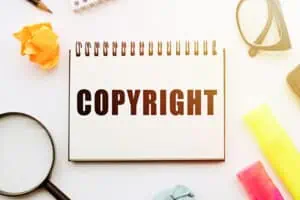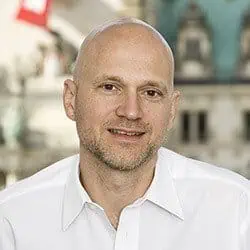Utility model: The 5 most frequently asked questions
How can you protect your invention with a utility model? Research, development and the practical implementation of new ideas require a lot of time and financial resources.

That is why researchers and companies are interested in protecting their inventions against unauthorized use by third parties and in marketing them themselves without restrictions. An industrial property right is an effective means of doing this.
This article provides you with the most important information on the subject of utility models.
Contents
- What exactly is a utility model?
- What requirements must the invention fulfill in order to obtain utility model protection?
- How does the application for a utility model work?
- What are the costs?
- What are the advantages of a utility model over a patent?
- Conclusion: Be on the safe side with a lawyer!
1. What exactly is a utility model?
According to the definition, utility model protection law serves to protect inventions commercially. This means that you can apply for utility model protection for all technical "firsts".
This can be a novel foodstuff, a chemical substance, the composition of a drug, a machine or an innovative everyday object.
However, you cannot protect a scientific theory, a novel method of playing or a new plant variety as a utility model.
2. What requirements must the invention fulfill in order to obtain utility model protection?
The body of law in which industrial property protection is regulated in detail is called the Utility Model Act (GebrMG). Basically, an invention must be based on an inventive step, be new and commercially exploitable.
Your invention is considered "new" if it does not correspond to the current state of the art. To be sure of fulfilling this requirement, you must observe all written publications that exist worldwide concerning your novelty!
Do you have any questions or would you like to make an appointment?
Call us at (040) 3501 6360 or write an e-mail to info@kanzlei-bennek.de.
3. How does the application for a utility model work?
To apply for a utility model, you must file an application at the German Patent and Trade Mark Office, or DPMA for short. This can be done on paper or online. You must attach various documents to this application, such as a detailed description of your invention and, if applicable, a drawing or illustrative sketches.
You must also define your claims for protection, such as all innovative technical features of your creation. If your request is granted, it is precisely these features that determine the scope of protection of your utility model.
The staff of the DPMA will examine your request. If it is formally in order, they register the utility model protection and publish it.
4. What are the costs?
Depending on whether you file your application online or in paper form, you pay a fee of 30 or 40 euros for the application and publication. This gives you a three-year term of protection.
If you want to protect your invention against third party marketing for a longer period, the DPMA will charge you so-called maintenance fees. These are:
- 210 euros after 3 years
- 350 euros after 6 years
- 530 euros after 8 years
The total duration of a utility model is limited to 10 years.
Attention: You must observe strict time limits to maintain the term of protection. You will not receive any reminders or requests from the German Patent and Trade Mark Office! If you miss a deadline, your IP right will expire automatically.
5. What are the advantages of a utility model over a patent?
Unlike a patent, there is no technical examination of the requirements for protection. Therefore, the application procedure for a utility model is significantly faster (three to four months vs. two to three years).
Due to the shorter time required, the costs and fees are significantly lower.
Utility model protection includes a "relative grace period". This is six months.
Caution: Point 1 in particular can quickly turn from an advantage to a disadvantage for the utility model owner. If, for example, a competitor doubts the validity of the utility model, he can request cancellation proceedings without providing legal evidence.
If this is granted, he is free to use your invention for his own commercial purposes without paying a license fee.
6. Conclusion: Be on the safe side with a lawyer!
Industrial property attorneys are familiar with the rules of utility model law. They know that filing a utility model application is more than just a measure to protect an invention cheaply and quickly.
To ensure that your invention actually meets the requirements of a utility model and that all details worthy of protection are correctly described, you should seek the advice of a specialized lawyer before filing your application.
We can assist you with the time-consuming utility model search and all application formalities, as well as be your legal representative in the event of an infringement or misuse of your property rights. Please feel free to contact us by phone or email.
Do you have any questions or would you like to make an appointment?
Call us at (040) 3501 6360 or write an e-mail to info@kanzlei-bennek.de.
Picture credits: © Ana_Fox / panthermedia.net



